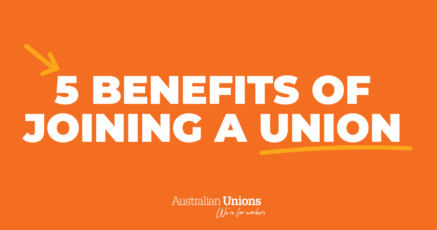If corporate profiteering is the Hollywood cowboy riding off into a sunset of success, then workers’ wages are the cacti left in the billowing dust.
Although an economist might not put it quite in those terms, we can agree that corporate profits have been going through the roof while workers’ wages have stagnated for at least a decade.
But is this simply a case of mining magnates reaping the benefits of an investment boom?
While it would be easy to point the finger at a few individual foreign corporations, the unfair balance of wealth between massive corporate profits and their workers can be found across most Australian industries.
What’s the deal with mining and finance?
As Policy Director at the Centre for Future Work Greg Jericho points out, CEOs and senior executives would like us to think that once we take out mining and financial sector profits, exorbitant profiteering isn’t so ‘unprecedented’.
Enjoying the argument from the BCA that we should exclude around 20% of the economy when looking at profits and wages.
— Greg Jericho (@GrogsGamut) August 8, 2022
Mining and finance profits are too big so let's not count them! pic.twitter.com/GDSt18TOPX
The difference between profits and wages is still huge even with mining and finance out of the picture. So if workers’ wages already look so woeful next to that profit line, how bad does it become when we do include mining profits?
Pretty appalling it seems.
Clearly there is a reason they don't want to include those "volatile" mining profits… pic.twitter.com/wH0tg8DixO
— Greg Jericho (@GrogsGamut) August 8, 2022
And as the graph so clearly demonstrates, wages have fallen behind profits for almost a decade. It’s why this cost-of-living crisis has hit so hard. Workers are trying to keep up with ever-increasing prices but wages going into their pockets have failed to keep up.
Unless you work in the arts or hospitality – both of which were hit harder during the pandemic – wages are lagging regardless of which industry you work in.
But if you look at that total profits and wages graphs the big shift occurred from March 2016. So let's look at all industries since then… pic.twitter.com/ac6pwtFkB5
— Greg Jericho (@GrogsGamut) August 8, 2022
None of this is to say that the average worker in mining or finance isn’t doing it tough. We can see from the trends over the past ten years that the cost-of-living and wages crisis has not sprouted from nowhere.
With prices on track to keep climbing throughout the rest of this year, reform to our bargaining laws to deliver pay rises is urgent.
Fair work, fair pay
Whether you are a miner in Western Australia, a retail assistant in Queensland, or an academic in Adelaide, workers are the ones who generate profit and keep a workplace running.
But it is the CEOs and senior executives who prosper at far higher levels than their own employees.
Any worker in a union can tell you that we can break away from current trends. We know it doesn’t have to be this way, and so we turn up every day to change our workplaces. And it works. On average, union members earn 32 per cent more than non-members.
Union members won’t stop showing up until there is equality, and that means ensuring fair wages for all workers.






SHARE:
Not just mining magnates: Corporate profiteering is happening in your industry too